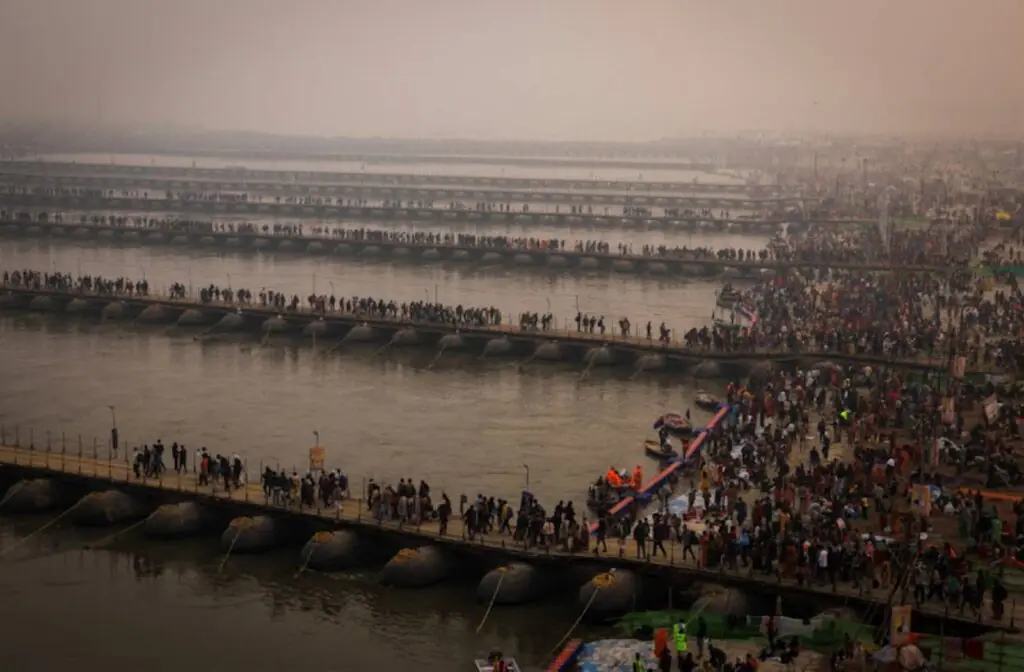PRAYAGRAJ, India – Nearly 15 million people, far surpassing expectations, took a holy dip in the frigid waters of Prayagraj on Monday, marking the first day of India’s Maha Kumbh Mela festival.
The event, which takes place every 12 years, drew a crowd six times larger than the expected 2.5 million participants.
The festival, one of the largest human gatherings globally, is set to attract more than 400 million visitors, both from India and abroad.
Uttar Pradesh Chief Minister Yogi Adityanath praised the devotees, noting that they had received “the holy benefit of bathing in the uninterrupted and clean Triveni,” the sacred confluence of the Ganga, Yamuna, and the mythical Saraswati rivers.
The ritual dip is believed to cleanse participants of their sins.

Security is a priority, with over 40,000 police officers stationed to manage the crowds, supported by AI-powered surveillance cameras to ensure safety.
The festival’s crowd management is crucial, as millions gather in a temporary city set up along the riverbanks, complete with 150,000 tents, 3,000 kitchens, and 145,000 restrooms.
The Maha Kumbh, a significant spiritual event, traces its origins to Hindu mythology, where the god Vishnu took a golden pitcher containing the nectar of immortality from demons, and four drops fell on the cities where the Kumbh Mela is held in rotation every three years.
The “Maha” Kumbh, occurring once every 12 years, is especially auspicious and attracts the largest crowds.
The event is a blend of religion, spirituality, and tourism, testing India’s crowd management capabilities. Authorities have also ramped up transportation, with Indian Railways adding 98 extra trains to accommodate the influx of visitors.
Prime Minister Narendra Modi, whose Bharatiya Janata Party governs Uttar Pradesh, expressed the festival’s significance in celebrating India’s spiritual heritage.
“The Maha Kumbh embodies India’s timeless spiritual heritage and celebrates faith and harmony,” he said in a social media post.
